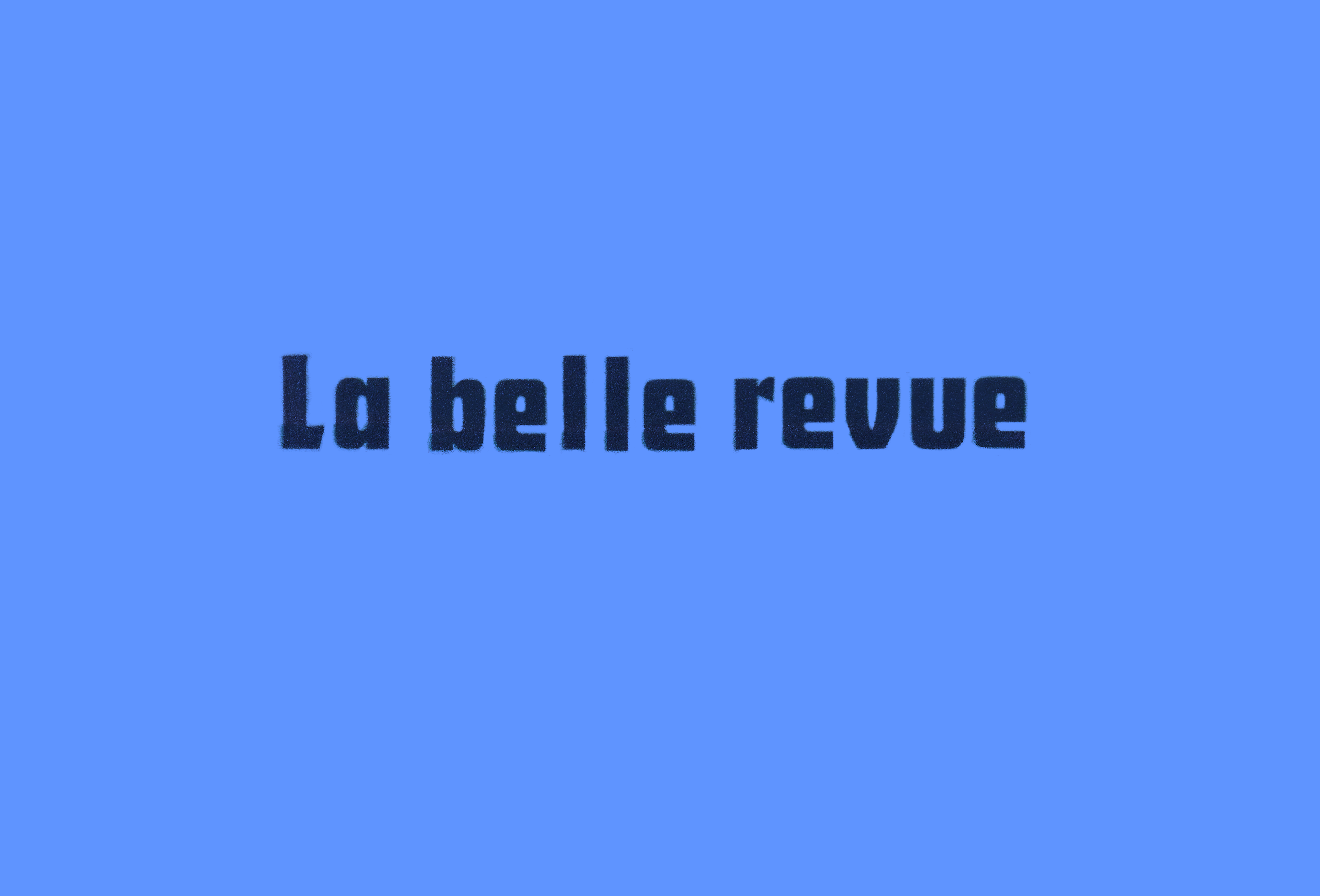In Lacoux, in the old school and town hall in a very Third Republic style, where the information panel compares him to Rimbaud, Bertrand Dezoteux is less inclined towards the loosening of morals and Hugolian alexandrine than he is towards an intimate encounter, in which he wards off the image of “3D artist” that might otherwise pursue him.
Like a clue to the shifts he promotes, the “heart” of the exhibition is not placed at its centre. The work En attendant Mars, often seen and commented upon, occupies the main room. It includes both the physical installation with its lethargic marionettes in their cardboard world, and the film in which these half-objects (because) half-post-humans, find themselves infused with a precarious form of life, thanks to the use of strings. Relegated to a corner, on its retro monitor, the film gives the impressions of being less alive than the “real” marionettes, with the playful, repressed impulses that they elicit. It becomes part and parcel of this fake decor, and is almost inanimate, like the rest, owing to this mise-en-abyme.
It is in the basement that we find the “heart” of the proposal: its substance, and its intimate, even lyrical element. On the big screen and in the darkness, the “Prologue” to La Prison des Poètes signifies a desire to break away. Exit the animation: we find the artist here as a compulsive camera operator, camcorder in hand, in the regressive night of a confinement to his home turf. Cats, dogs, bats, the pitiful vegetation of urban interstices and the contours of poorly lit parking lots are “chaotically” superimposed, under the beam of a torch. Sometimes, a hand appears against a fence, a voice names an animal or plant: all kinds of discreet but clear signals of a return to subjectivity within the visual exploration, between FPS1 and learning a language. Layers buried under the image, or recordings traversing the soundtrack, they are – at random – a lover’s profile, familiar voices, or an anecdote about the devil and constipation. “Prison” or otherwise, there is a desire not to seal off the frame, either visually or thematically.
Lo-fi in its capture and surimpression – as were some of the animations of his previous films – the image of this Prologue is dense, sometimes to the point of opacity, oneiric, and self-reflexively focused on the fascination of the digital eye with its own existence. Despite their darkness, the shots have all the freshness of DV clips shot on the first day of the year 2000 by a teenage clutching a gift from his grandmother. This way of embracing a very rough reality is ultimately quite Rimbaldian. The solitude of these images is youthful, melancholic, and very different from that of the infinite spaces of modelisation.
Striking and unexpected, a somersault makes us pass back over to the other side of the mirror: here we are again in a world of software, the observatory-style sky stuck to the backdrop of a landscape where hybrid-looking creatures scrape out their meagre existences. It is less pop than the Jésus Perez of Harmonie and more “historical”. Instead of Rimbaud, we find Dalí, Tanguy, and a concern to tear animation away from pleasant scripted fables, so as to draw it towards the pictorial, sculpture side, and hence experimental film. As though the diligent return to the camcorder had allowed Dezoteux to once again pose the question of the inclusive ties between narrative and images, to restore the priority to the latter, to “mental” images, in the organic character of their existence, as Simondon described it.2 Of course, Dezoteux reminds us that in Corso or Animal glisse, it was the constraints of 3D object animation that conditioned the development of the narrative sequences (often loops). Here, the approach is more surrealist: the sudden appearance of images and their interaction seem to obey internal laws, precisely like those of “organs”, or to obey the non-law of free association and from there the story either emerges or it doesn’t. Often, it doesn’t emerge – or, better yet – as with all artistic film, it is on the verge of emerging and always beneath the image that invites it in. This is possibly what the “poets’ prison” actually is.3
By going back up to the little annex room, the artist has created a counterpoint that almost tries to give us the slip: blue-pink watercolours accompany the publication of an illustrated fable, Le Boudin et la pomme. Childlike, intimate, scatological and libertine, this little adventure in rhyme is, above all, surprising. But in the ironic chauvinism and culinary references, we also find the author’s funny bone. And with this return to a basic practice of the brush and playful storytelling, as with the psychoanalytic gesture of opening the doors wide to subconscious imagery, made up of things from childhood, guts and genitals, we eventually identify the same intention as in La Prison des poètes: that of avoiding the role of provider of 3D entertainment, but of pursuing singularity as an artist and poet.
Notes
- Short for First-Person Shooter, a game in which the player is seen in subjective view and only their hands occasionally appear on-screen.
- On the organic nature of the image in Gilbert Simondon, see Gilbert Simondon, Imagination et invention, PUF, 2014.
- See Bertrand Dezoteux, “L’animation comme exploration d’environnements numériques”, LINKs no 4 – Espace habité, 2019.







